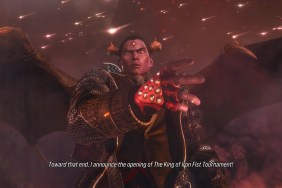Quest for the <adjective> <noun>.
Mrrf. I wake up to a little mascot with wings on his butt telling me to save the planet from a world-eating demon called the Devourer. I was born just now out of a tree. No, not that tree. And there’s a girl with no memories. Also add an underground resistance guild called Ad Libitum, which is the long version of "ad lib". I suppose they just made up their resistance plans as they went along? Because I doubt it’s anyone’s “pleasure” to be stuck in such an unfortunate catastrophe, but hey, it’s just another one of those Tales of the World.
[image1]Character creation in a J-RPG, who would’ve guessed? After tweaking your look and choosing a class (which you can change/upgrade later if you feel like grindng up from level 1 all over) and waking up to confront the aforementioned mascot, Radiant Mythology starts off in Ailily, a city under the rule of nasty-guy Ganser. He won’t let anyone in or out because he’s secretly sacrificing townspeople to the demon in exchange for power. Of course, your first main plot outing is putting a quick end to that, and you’ll eventually move on to other towns and branches of the justice league. It could take you over ten hours to get to that point because of the plentiful padding and even with all the kill quests you may have to grind a bit. In fact, there are really only five plot quests in the first town, but you’ll have to slog through a mountain of fetch quests before you’re famous enough to be trusted with them.
There are some RPGs that have you walk everywhere and some that are almost completely menu based (if you’ve ever played Atelier Lise, for instance), but this one has a nice balance. The different shops and areas of town are accessed through a menu, but once there you can wander around and talk to people. The overworld map is essentially a menu, too, so travel time between dungeons and towns is pretty much nil. Love that transporter.
Along with the more generic townspeople, cities are populated with characters from other Tales games. It’s a total fanfest. I recognized a few from Tales of Symphonia, but the list of borrowed characters spans many other games as well, some that weren’t even released stateside. Knowing them all would be a perfect myspace quiz qualifier, “You know you’re a Tales series otaku when…”
[image2] The signature skits of the series are also present, and the banter goes strangely beyond the inane to give players some life advice. Water safety, the importance of exericise, having a broad prospective, and, of course, believing in yourself. Your interaction here is either smart-ass or polite, which ostensibly affects the way characters react to you, but it took a LONG time for Kratos to want to party-up with me.
Yeah, the teams are kinda screwy. Since you’re taking quests MMO-style from the guild, your group is contracted specifically for the task at hand. When it’s completed they’ll all go home. Recruiting in the first place is based on how much they “accept” you, so if you haven’t quite proven yourself, you’ll have to go with one of the more generic companions. They’re fine, but random. You might take someone out and earn them a few levels, only to come back next mission to find they’ve slipped a couple backwards somewhere along the way. Unfortunate!
And so we venture Out, in this case, indicating the out of town. Each area has a few levels like a dungeon, but quests will typically direct you to a specific one. There are no random encounters, but why, if the enemies can take me by surprise from behind, can’t I do the same to them?
[image3]The battle controls might take a second to get used to, but once you do it feels good. Taking the same basic set-up as Tales of the Abyss (Flex Range Linear Motion Battle System) your characters address the enemy across the screen, but you can run away in any direction with the analog nub and the camera automatically readjusts. The part that takes a minute to stick is that you should really be using the D-pad. This gives you access to your high and low slashes, jump, and Artes (special moves–”Take that!”) Once you get it through your head that the analog stick is only useful for that “flex range,” you’ll feel pretty much right at home mapping four Artes of your choice and pulling them off in quick succession.
Outside of fighting there is plenty to accomplish because enemy drops and “search points” yield the materials needed to be a super crafting master! From making your own food, to upgrading your equipment, and even creating the sickles and pickaxes you need to use the search points in the first place, you’ll be able to spend a lot of time earning skills points.
So where does this all leave us? Somewhere in the second act, feeling a little ground out… Completionists and series fans might dig nailing every single quest in a town and uncovering all the most powerful Artes, but the average gamer will find Radiant Mythology a pretty typical anime cliché.
-
J-RPG nostalgia wave
-
J-RPG cliché undertow
-
Crafting is actually kinda fun
-
Fetch quests still aren't
-
Class up = level 1 all over











